
 |
|
|
|
|
|
Pyrite Ooids - Small Grains with Big Implications |
|
| Pyrite ooids were first recovered from the Devonian Chattanooga Shale, and upon further searching also from the Ordovician of Newfoundland and Saskatchewan, the Silurian of Tennessee, the Cambrian of Iowa, and the Proterozoic of North America and India. Although superficially the same - concentrically coated pyrite grains, in detail there seem to be at least two modes of origin: (1) through post-burial pyritization of chamosite ooids (replacement of oolitic ironstone), and (2) through syngenetic growth of microbially mediated pyritic concretions that go through multiple burial - exhumation cycles on the seafloor. Pyrite ooids from the Devonian Chattanooga Shale are of mode (1) and are described below. Pyrite ooids from the Ordovician Winnipeg Formation are of mode (2) and are described on the next page. | |
| Devonian pyrite ooids occur in erosional lags within Devonian black shale successions of the eastern US. |
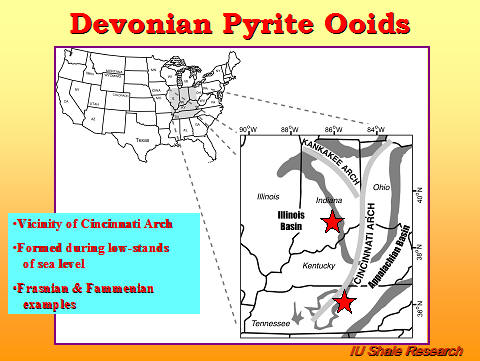 |
| see slide text. |
 |
| see slide text. |
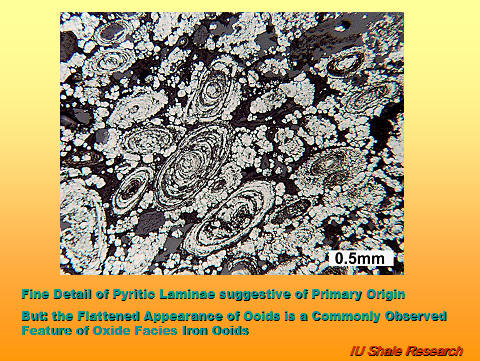 |
| Textural details of pyrite ooids can be enhanced/uncovered through etching with nitric acid. Need to experiment to find optimal etching times and acid concentrations. |
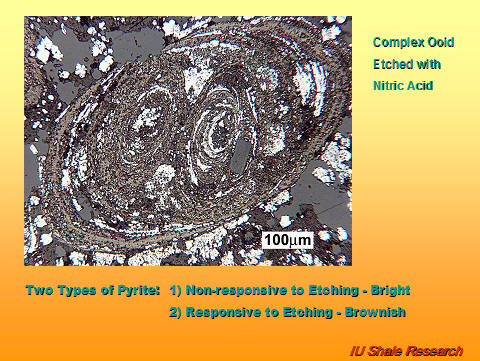 |
| The very fine crystalline nature of the pyrite does initially suggest a primary origin. |
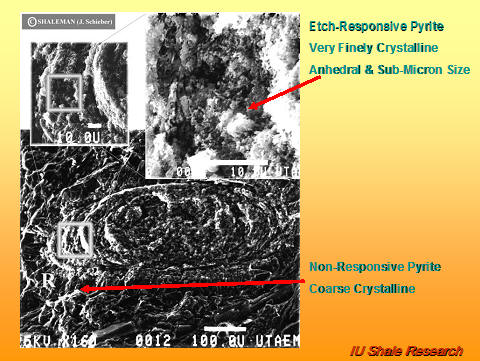 |
| However, the Al and Si background of pyritic cortexes suggests tiny inclusions of silicates, and indicates replacement of silicate phase. |
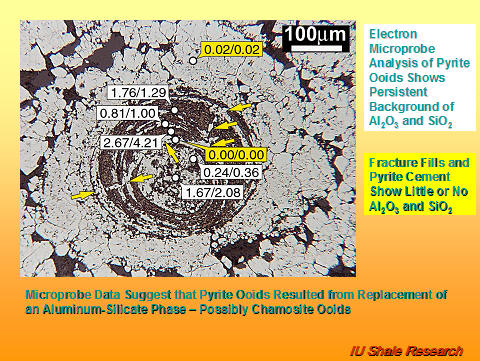 |
| Sulfur isotope ratios of individual cortexes were measured by ion microprobe and show uniform values across pyrite ooids. This as well is more consistent with replacement than with gradual accretion of primary pyrite cortexes. |
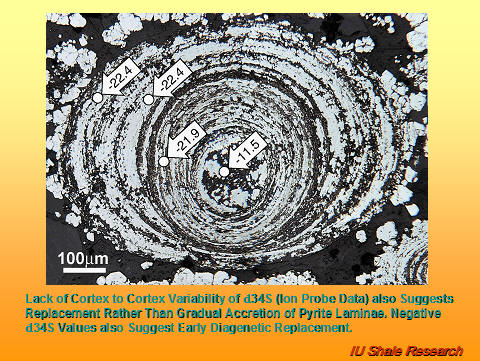 |
| After considerable searching through multiple occurrences, partially pyritized chamosite ooids were found. These confirmed the hypothesized replacement origin. |
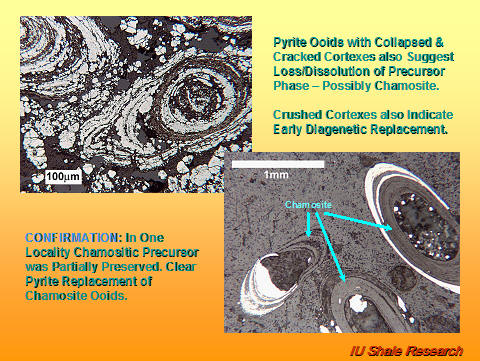 |
| see slide text. |
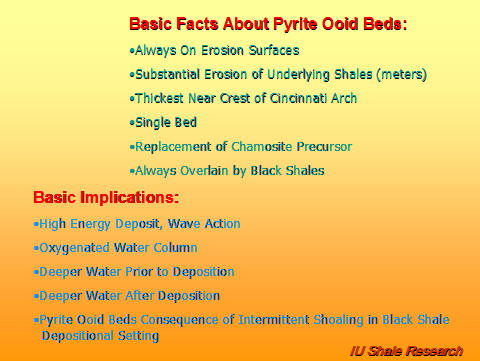 |
| Model for formation of pyrite ooid beds. (A) black shale deposition at high sea level; (B) sea level drop, reworking & oxidation of black shale, formation of chamosite ooids; (C) sea level rise and cover of oolitic ironstone with organic muck; (D) pyritization of chamosite ooids beneath black shale cover. |
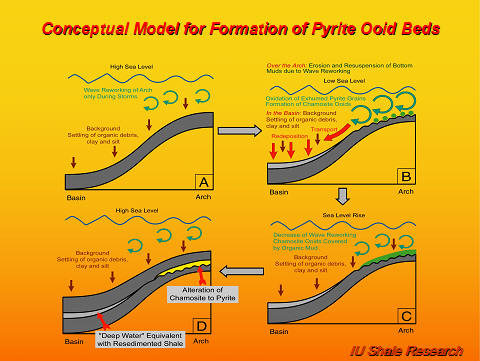 |
| Pyrite ooids form near crest of Cincinnati Arch. Degree of iron concentration a function of depth of black shale erosion. |
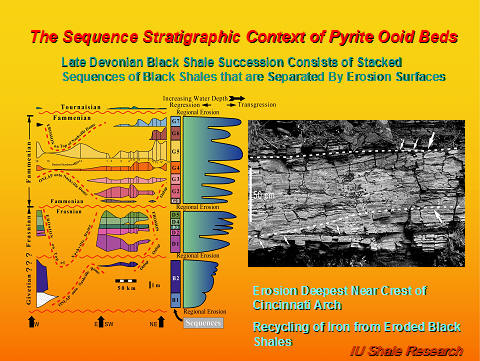 |
| Chamositic ironstones in parts of the Devonian succession that did not favor black shale formation seem to correlate with pyrite ooid horizons on the Cincinnati Arch. Since publication of this study in GEOLOGY, additional pyrite ooid bearing horizons were found in Chattanooga, Ohio, and New Albany Shale. |
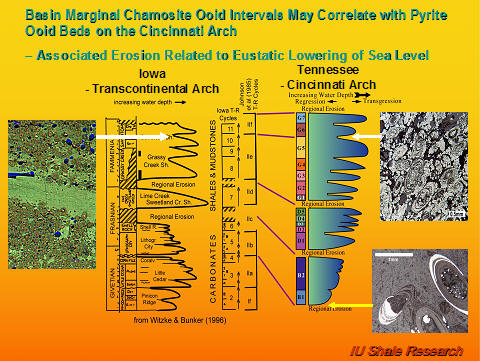 |
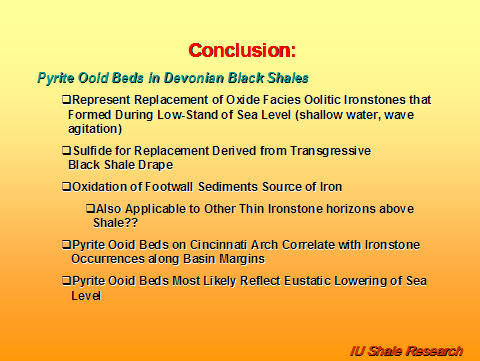 |
|
|
Reference for above: Schieber, J., and Riciputi, L., 2004, Pyrite ooids in Devonian Black Shales record intermittent Sea level drop and shallow water conditions. Geology, v. 32, p. 305-308. download PDF file (left click on link and click on "Save as"...) |
|
|
|
|
| Back to SHALE RESEARCH LAB Main Page | |
| Back to IU Department of Geological Sciences | |
|
© Jürgen Schieber, IU Bloomington Department of
Geosciences Last updated: February 08, 2022. |
|